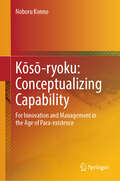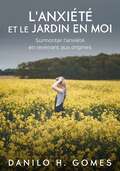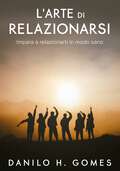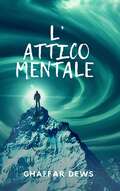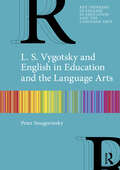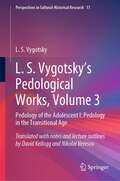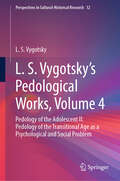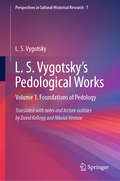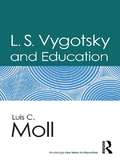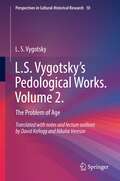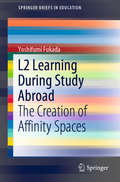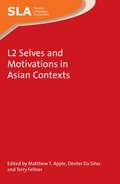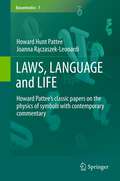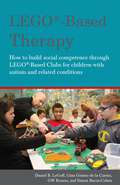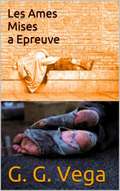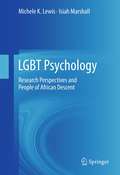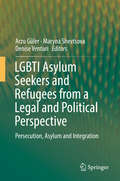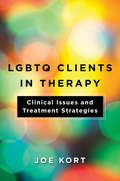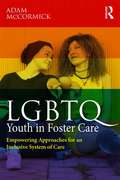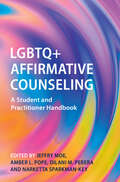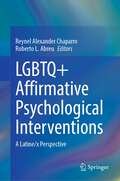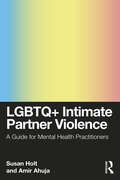- Table View
- List View
Künstliche Intelligenz: Das Psi-Organ in der Nussschale
by Dietmar DietrichDie Psyche mit dem neuronalen System verschmelzen zu können, ist ein lang angestrebtes Ziel. Wissenschaftler brauchen oft Jahre, um die Hürden auf dem Weg dahin zu begreifen. Ist das unumgänglich? Welche naturwissenschaftlichen Prinzipien liegen dem vorliegenden Modell zugrunde? Kann es ohne mathematischen Formalismus verstanden werden? Wie kann ein simuliertes Modell dieser Zusammenführung von Psyche und Neurologie – nennen wir es das Psi-Organ – aus heutiger Sicht aussehen?Mit Hilfe von Simulationsexperimenten können damit psychologische und soziale Theorien auf naturwissenschaftlicher Basis überprüft werden. Das Modell kann als Grundlage für KI-Systeme dienen, die Menschenleben retten, Energie sparen, für Sicherheit auf Flughäfen sorgen, bei der Pflege älterer Menschen unterstützen und vieles mehr. Dieses Psi-Organ-Modell geht weit über die heutigen, hauptsächlich verhaltensbasierten KI-Systeme hinaus.Das Manuskript ist als Einführung zum Verständnis und der Modellierung des menschlichen Geistes und der künstlichen, humanoiden "Intelligenz" zu verstehen.
Kōsō-ryoku: For Innovation and Management in the Age of Para-existence
by Noboru KonnoThis book examines conceptualizing capability (kōsō-ryoku), the most important ability for thriving in the era of innovation. A new approach, "formative conceptualizing capability," is proposed as the core knowledge methodology for innovation and management, which is is a fundamental human ability that goes beyond the boundaries between cognitive and tangible realities to shape concepts and drive innovation. Traditional studies on imagination in Western philosophy are combined with knowledge creation theory based on Eastern way of thinking. The book argues the capability should be at the core of innovation management, offering insights and principles for navigating the challenges of the present age. Japan has experienced the world's earliest capitalist setback and is stuck in a prolonged stagnation. The author maintains, however, that what is needed in this coming chaotic era is not only “imagination”, as it would be called in English, but also the power of creating kōsō, the Japanese term for “formative concept”. The author has a proven track record in research and practice on knowledge creation theory, innovation management, design thinking, and scenario planning. He has reorganized and set forth in this book the perspectives he has proposed under the theme of kōsō-ryoku to present a new methodology of knowledge for living in the twenty-first century.
L'anxiété et le jardin en moi: Surmonter l'anxiété en revenant aux origines
by Danilo H. GomesSi vous souffrez encore d'anxiété, c'est que vous n'avez pas encore compris comment fonctionne votre jardin de l'âme. Il existe un monstre apparemment invincible qui, en ce moment même, tourmente la vie d'innombrables personnes dans le monde entier. Ce monstre appelé anxiété a dévasté les âmes comme un ouragan qui détruit tout ce qu'il touche. Connaissant le Jardinier Parfait et le jardin de l'âme, nous voyons une lumière au bout du tunnel pour les anxieux. « L'anxiété et le jardin en moi » est un ouvrage chrétien qui favorise avant tout la connaissance philosophique de soi tout en développant la foi dans le Créateur. Un livre court mais profond. Surmontez l'anxiété tout en apprenant à mieux connaître votre jardin intérieur.
L'arte di relazionarsi: Impara a relazionarti in modo sano
by Danilo H. GomesDal tanto più relazionarsi con le macchine piuttosto che con persone, gli esseri umani hanno apparentemente perso le abilità sociali necessarie per mantenere buoni i loro rapporti. Ci sono quelli che hanno rinunciato a relazionarsi ed oggi vivono chiusi in pochi metri cubi cercando di vivere in solitudine. Come relazionarsi? Come mantenere una relazione? Con chi relazionarsi? Questi e tanti altri sono i dubbi che solitamente invadono la mente delle persone di tutto il mondo. Ciò è facilmente comprensibile prendendo in considerazione la situazione in cui le generazioni di questo secolo si trovano. Stiate disposti a cambiare le vostre abitudini e preparatevi per sfruttare dei vostri rapporti in modo immensamente piacevoli, oltre che a mantenerli solidi e sani.
L'attico mentale
by Ghaffar DewsQuesto libro è una guida per raggiungere ciò che vogliamo veramente nella nostra vita. A volte sappiamo quello che vogliamo, ma non ci crediamo, il che fa sì che quella manifestazione si allontani da noi. La tua mente può far accadere le cose e può davvero far sì che si raggiunga veramente il successo, solo quando sappiamo come portarlo a nostro vantaggio. In questo libro troverai le idee migliori per aiutarti.
L'esprit en paix est capable de tout: Que diriez-vous de vous reposer dans la tempête ?
by Danilo H. GomesAvez-vous l'impression qu'un chaos incessant règne dans votre esprit ? Le changement est possible. La vie devient un fardeau lorsque nous ne jouissons pas de la paix intérieure. Même nos capacités mentales sont compromises lorsque nous vivons dans l'anxiété. L'esprit devrait être l'endroit le plus paisible en nous. La bonne nouvelle, c'est que la paix est tout à fait accessible. L'ESPRIT EN PAIX EST CAPABLE DE TOUT montre au lecteur le bon chemin pour atteindre le mode de vie paisible dont tant de gens rêvent. Quel est votre potentiel inexploité ? Le déclencheur qui manque actuellement pour réveiller tout ce potentiel caché en vous est la paix intérieure. Atteignez la paix de l'esprit et tirez le meilleur parti de ce que votre cerveau a à vous offrir.
L. S. Vygotsky and English in Education and the Language Arts (Key Thinkers in English in Education and the Language Arts)
by Peter SmagorinskyL. S. Vygotsky and English in Education and the Language Arts focuses on the hugely significant contributions of L. S. Vygotsky to research, theory, and practice in English and the Language Arts, exploring the relevance of Vygotsky’s works for today’s teachers and researchers.Drawing on his 30 years of study, Smagorinsky interprets Vygotsky in relation to literacy education, teacher education, special education, and how life outside school has an impact on how people function within them. This insightful and accessible text firstly explores Vygotsky’s early life to situate him historically and culturally and goes on to trace his understanding of human psychology as it relates to the social contexts of schools and pupils’ lives at home. Vygotsky’s pedagogical ideas are then discussed in depth, with specific attention on the role of emotions, the zone of proximal development, expanding textuality beyond writing, and his belief in the primacy of socialization. This book illuminates new areas of understanding, and challenges common perceptions available through limited and selective readings, establishing Vygotsky as a complex developmental psychologist rather than a classroom practitioner. With points for discussion and reflection provided throughout, this text will be invaluable for student teachers, teachers, and academics in the field of English and the Language Arts.
L. S. Vygotsky's Pedological Works, Volume 3: Pedology of the Adolescent I: Pedology in the Transitional Age (Perspectives in Cultural-Historical Research #11)
by L. S. VygotskyThis book contains the first complete translation of the first half of the Pedology of the Adolescent by the Soviet thinker, educator, and teacher L.S. Vygotsky. It was the longest work published in his lifetime and was a correspondence course written by Vygotsky for teachers across the Soviet Union. The book is a sustained argument about the borders of pedology, the nature of the transition between childhood and adulthood, and the concrete character of the distinction between the lower psychological functions that we largely share with animals and those that are specific to fully socialized humans. After an initial methodological introduction, three kinds of maturation—general anatomical, sexual, and sociocultural—are explored. This book will be followed by a companion volume covering pedology of the transitional age as a psychological and social problem.
L. S. Vygotsky's Pedological Works, Volume 4: Pedology of the Adolescent II: Pedology of the Transitional Age as a Psychological and Social Problem (Perspectives in Cultural-Historical Research #12)
by L. S. VygotskyThis book contains a new translation of the second half of the Pedology of the Adolescent by the renowned Soviet thinker, educator and teacher L.S. Vygotsky. It was a correspondence course written by Vygotsky for teachers across the Soviet Union, and it constitutes the longest work published in his lifetime. Four chapters have never been translated before and appear here for the very first time. With this volume, Vygotsky concludes the sustained argument he commenced in Vol. 3 Pedology of the Adolescent I: Pedology in the Transitional Age, establishing the borders of pedology, the nature of the transition between childhood and adulthood, and the concrete nature of the distinction between the lower psychological functions we largely have in common with animals and those that are specific to fully social humans. In this volume Vygotsky "puts flesh on the skeleton" of his working hypothesis concerning the interests and the development of concepts in the psychology of the adolescent. He then frames concepts as a special case of developing higher psychological functions, and demonstrates the roots of that development in the social environment. Many of the problems Vygotsky broaches in these new chapters--the choice of a profession, the initiation of the adolescent into working life--are still of immediate, not to say urgent, relevance today. The volume concludes with a remarkable vision of a society "where production is organized for the producers" that still seems far ahead of its time and still ahead of our own.
L. S. Vygotsky's Pedological Works: Volume 1. Foundations of Pedology (Perspectives in Cultural-Historical Research #7)
by L.S. VygotskyThis book provides both a lost last word and a firm first foundation: seven lectures, given in the last months in the life of the Soviet thinker, teacher, and writer L.S. Vygotsky, offer us the most comprehensive and developed form of his thoughts on the child, expressed in the most fundamental and even popular form that Vygotsky himself used with his beginner-level students. As the title of Vygotsky’s course indicates, these are foundations upon which cultural-historical researchers can rebuild the lost science of “pedology”, a holistic approach to child development based on the dynamic unity of physical and mental development. Volume One includes translations of seven of Vygotsky’s lectures that reflect his approach to pedology; the method of pedology and the “methodics” of the unit of analysis; the role of heredity and social environment in child development; and general laws of development in childhood that will help parents and teachers understand the way the child’s endocrine system, nervous system, and mind change as the child enters a culture and learns to make history.
L.S. Vygotsky and Education (Routledge Key Ideas in Education)
by Luis C. MollVygotsky’s legacy in education is enduring and prolific, influencing educational research and scholarship in areas as far ranging child development, language and literacy development, bilingual education, and learning disabilities to name but a few. In this accessible, introductory volume, renowned Vygtosky authority Luis C. Moll presents a summary of Vygtoskian core concepts, constituting a cultural-historical approach to the study of thinking and development. Moll emphasizes what he considers central tenets of Vygotsky’s scholarship --- the sociocultural genesis of human thinking, the consideration of active and dynamic individuals, a developmental approach to studying human thinking, and the power of cultural mediation in understanding and transforming educational practices, broadly considered. After an introduction to Vygotsky’s life, the historical context for his work, and his ideas, Moll provides examples from his educational research inspired by Vygotsky’s work. With both critical scrutiny of current interpretations of Vygotksian theory and clear deference for the theorist known as "The Mozart of Psychology," Moll stresses the many ways Vygotksy’s theory can offer a theory of possibilities for positive pedagogical change.
L.S. Vygotsky’s Pedological Works. Volume 2.: The Problem of Age (Perspectives in Cultural-Historical Research #10)
by L.S. VygotskyThis book is the second volume in a series presenting new English translations of L.S. Vygotsky’s writings on the holistic science of the child he called “pedology”. It presents unique materials which reflect the development of Vygotsky’s theoretical position at the last stage of his creative evolution in 1932-1934 and contributes to the number of original Vygotsky texts available in English. It includes the problem of age and age periodization; the structure and dynamics of age, psychological characteristics of age crises and diagnostics of development in relation to age, and the zone of proximal development, which became his most widely known but least understood theoretical innovation. This book places that concept in its context and makes it fully understandable for the first time. In addition, there are lectures and notes that Vygotsky made in preparation for lectures on six critical periods: birth, one year old, three, seven, and thirteen. Vygotsky also devotes chapters to the stable periods of infancy and early childhood and two whole chapters to school age. Future volumes in this series will explore Vygotsky’s pedology of the adolescent.
L2 Learning During Study Abroad: The Creation of Affinity Spaces (SpringerBriefs in Education)
by Yoshifumi FukadaThis book presents three case studies that examine how English language students construct affinity spaces to secure target language-mediated socializing opportunities with local people in both academic and non-academic contexts. The studies were conducted in Hawaii, the U.S and Tokyo, Japan and focus on the Japanese author of this book, an English as second language (ESL) speaker and learner, during his sabbatical in Hawaii; on a Japanese international student who studied in Hawaii; and on a Chinese international student studying in Japan. The studies hold a variety of implications for classroom practice, including helping students recognize the value of cultural and social capital in relation to their linguistic skills.
L2 Learning, Teaching and Assessment: A Comprehensible Input Perspective
by Nihat PolatThis book explores second language (L2) learning, teaching and assessment from a comprehensible input (CI) perspective. This focus on the role of input is important for deepening our understanding of interactions between the learner, teacher and the environment as well as of the nature of the learning, teaching and assessment processes. The book takes a blended approach that promotes the intertwining of theory, research and practice in L2 pedagogy and assessment and aims to address the commonly used concept of CI and its role in L2 education. Content includes a comprehensive discussion of the conceptual foundation of CI; a multimodal and dynamic interpretation of CI from numerous perspectives; a critical discussion of well-known L2 acquisition theories and research; a practical examination of the role of multimodal forms of CI in L2 pedagogy; an analytical review of factors to be considered when modifying CI for pedagogical purposes in different settings and an overview of CI in L2 assessment. It will be of interest to students in the fields of L2 learning, teaching and assessment, teachers in second/foreign language settings and researchers of SLA and teacher education.
L2 Selves and Motivations in Asian Contexts
by Dexter Da Silva Matthew T. AppleThis book fills an existing gap in language learning motivation research by examining the applications of current motivational theories and models from WEIRD (Western, educated, industrialized, rich, developed) contexts to educational systems in Asian contexts. All chapters are focused on second language (L2) motivation as it applies to the EFL situation in Asian countries where English is a mandatory subject in school. Themes in the volume cover the use of possible L2 selves as a theoretical model of motivation, the role of teacher motivation and demotivation in non-European educational systems, study abroad, motivation among adolescents, cross-cultural differences in learner motivation among Asian cultures and the influence of native speakerism on language motivation and cultural identity. This book will appeal to ESL/EFL educators, postgraduate students, researchers and teacher-trainers both inside and outside Asian countries, who are interested in research on L2 motivation in general and within Asian contexts in particular.
LAWS, LANGUAGE and LIFE
by Howard Hunt Pattee Joanna Rączaszek-LeonardiHoward Pattee is a physicist who for many years has taken his own path in studying the physics of symbols, which is now a foundation for biosemiotics. By extending von Neumann's logical requirements for self-replication, to the physical requirements of symbolic instruction at the molecular level, he concludes that a form of quantum measurement is necessary for life. He explains why all non-dynamic symbolic and informational controls act as special (allosteric) constraints on dynamical systems. Pattee also points out that symbols do not exist in isolation but in coordinated symbol systems we call languages. Such insights turn out to be necessary to situate biosemiotics as an objective scientific endeavor. By proposing a way to relate quiescent symbolic constraints to dynamics, Pattee's work builds a bridge between physical, biological, and psychological models that are based on dynamical systems theory. Pattee's work awakes new interest in cognitive scientists, where his recognition of the necessary separation--the epistemic cut--between the subject and object provides a basis for a complementary third way of relating the purely symbolic, computational models of cognition and the purely dynamic, non-representational models. This selection of Pattee's papers also addresses several other fields, including hierarchy theory, artificial life, self-organization, complexity theory, and the complementary epistemologies of the physical and biological sciences.
LEGO®-Based Therapy: How to build social competence through LEGO®-based Clubs for children with autism and related conditions
by Simon Baron-Cohen Gw Krauss Daniel B. Legoff Georgina Gomez De La CuestaThis complete guide to LEGO® Therapy contains everything you need to know in order to set up and run a LEGO® Club for children with autism spectrum disorders or related social communication difficulties and anxiety conditions. By providing a joint interest and goal, LEGO® building can become a medium for social development such as sharing, turn-taking, making eye-contact, and following social rules. This book outlines the theory and research base of the approach and gives advice on all practical considerations including space, the physical layout of the room and choosing and maintaining materials, as well as strategies for managing behaviour, further skill development, and how to assess progress. Written by the pioneer of the approach alongside those who helped form it through their research and evaluation, this evidence-based manual is essential reading for professionals working with autism who are interested in running a LEGO® Club or learning more about the therapy.
LES AMES MISES A L'EPREUVE
by Guido Galeano Vega Valerie Guilloteau FernándezDe nos jours, le monde jouit de la possibilité de nager dans l’abondance, cependant nombreuses sont les personnes qui souffrent de carences extrêmes. Ce livre relate l’expérience d’un jeune homme obligé d’abandonner pour la première fois son foyer, et pour la première fois aussi d’affronter les carences que provoque cette expérience pour laquelle personne n’a été préparé. C’est l’histoire de milliers de personnes dans le monde, et l’objectif de ce livre est d’éveiller chez chaque lecteur la compassion envers ces personnes dont les âmes connaissent les épreuves les plus dures de l’existence humaine.
LGBT Psychology
by Michele K. Lewis Isiah MarshallSame-sex attracted, and non-gender conforming African-Americans are substantial in number, yet underrepresented in the social and behavioral science literature. This volume addresses the issues of African-American LGBT psychology as a case of indigenous psychology. The authors present the research of scholars who are developing theory, practice, and services that are couched within the specific cultural complexities of this population. Some key topics addressed in AFrican-American Issues in LGBT Psychology are gender, spirituality, family, racism, "coming out", generational differences, health and safety issues, urban vs. rural realities, and implications for researchers.
LGBTI Asylum Seekers and Refugees from a Legal and Political Perspective: Persecution, Asylum and Integration
by Arzu Güler Maryna Shevtsova Denise VenturiThis book addresses the ‘three moments’ in lesbian, gay, bisexual, transgender and intersex (LGBTI) asylum seekers’ and refugees’ efforts to secure protection: The reasons for their flight, the Refugee Status Determination process, and their integration into the host community once they are recognized refugee status.The first part discusses one of the most under-researched areas within the literature devoted to asylum claims based on sexual orientation and gender identity, namely the reasons behind LGBTI persons’ flight. It investigates the motives that drive LGBTI persons to leave their countries of origin and seek sanctuary elsewhere, the actors of persecution, and the status quo of LGBTI rights. Accordingly, an intersectional approach is employed so as to offer a comprehensive picture of how a host of factors beyond sexual orientation/gender identity impact this crucial first stage of LGBTI asylum seekers’ journey.In turn, the second part explores the challenges that LGBTI asylum seekers face during the RSD process in countries of asylum. It first examines these countries’ interpretations and applications of the process in relation to the relevant UNHCR guidelines and questions the challenges including the dominance of Western conceptions and narratives of sexual identity in the asylum procedure, heterogeneous treatment concerning the definition of a particular social group, and the difficulties related to assessing one’s sexual orientation within the asylum procedure. It subsequently addresses the reasons for and potential solutions to these challenges.The last part of the book focuses on the integration of LGBTI refugees into the countries of asylum. It first seeks to identify and describe the protection gaps that LGBTI refugees are currently experiencing, before turning to the reasons and potential remedies for them.
LGBTQ Clients in Therapy: Clinical Issues And Treatment Strategies
by Joe KortAll the answers clinicians need to work effectively with LGBTQ clients. A therapist who treats LGBTQ clients often must be more than “gay friendly.” Clinical experience, scientific research, and cultural understanding are advancing rapidly, and the task of being LGBTQ informed is ever-changing in today's world. This book covers topics such as how to avoid making the common mistake of believing that "a couple is a couple," thus treating LGBTQ couples the same as their heterosexual counterparts; how to treat clients struggling in "mixed" orientation marriages and relationships (straight and LGBTQ spouses in the same couple); and how to work with all clients who have non-heteronormative sexual behaviors and practices. Perhaps most importantly, the book discusses covert cultural sexual abuse (the trauma suffered from having to suppress one's own sexual and gender identity) as well as the difficult process of coming out to family and friends. A therapist's job is to help clients and their identities through their own lens and not anyone else's—especially the therapist's. The gay affirmative principles put forward in this book will help you build a stronger relationship with your LGBTQ clients and become the go-to therapist in your area.
LGBTQ Youth in Foster Care: Empowering Approaches for an Inclusive System of Care
by Adam McCormickRepresenting an often overlooked population in social work literature, this book explores the experiences of LGBTQ youth as they navigate the child welfare system. Adam McCormick examines the entirety of a youth’s experience, from referral into care and challenges to obtaining permanency to aging out or leaving care. Included throughout the book are stories from LGBTQ youth that address personal issues such as abuse, bullying and harassment, and double standards. Filled with resources to foster resilience and empower youth, this book is ideal for professionals who are hoping to create a more inclusive and affirming system of care for LGBTQ youth.
LGBTQ+ Affirmative Counseling: A Student and Practitioner Handbook
by Amber L. Pope Jeffry Moe Dilani M. Perera Narketta Sparkman-KeyAddressing a need for LGBTQ+ affirmative counselling in training, this meticulously crafted book is designed for graduate counselling students, new practitioners, and cross-disciplinary professionals. Authored by top researchers and clinicians, this collection synthesizes best practices in training and intervention, presenting a blueprint to seamlessly integrate affirmative counselling into academic curricula. Individual chapters cover topics including history, culture, assessment, treatment planning, crisis response, international perspectives, technology, and training. Enriched with resources, real-life case examples, and thoughtful reflection questions, the book moves beyond theory to provide actionable insights for effective LGBTQ+ affirmative counselling in diverse organizational settings. Tailored for graduate programs, this book equips future practitioners to adeptly navigate the complexities of affirmative counselling.
LGBTQ+ Affirmative Psychological Interventions: A Latine/x Perspective
by Reynel Alexander Chaparro Roberto L. AbreuThis book presents descriptions of interventions, results of empirical research, and theoretical contributions developed by Latine/x psychologists based on affirmative approaches aimed at promoting acceptance and understanding of LGBTIQ+ people. Contributions in this volume bring together the work of Latine/x scholars, practitioners, and activists across five Latin American countries or territories (Argentina, Chile, Colombia, Mexico, and Puerto Rico) and in the United States, in an effort to provide multicultural perspectives to LGBTIQ+ affirmative psychological interventions that highlight local, regional and national particularities. Chapters in this volume go beyond contributions made by applied psychology fields (e.g., clinical and counselling psychology), where affirmative orientations are predominantly located, and include contributions from other fields of psychological research such as social and community psychology. The book is divided in two parts. Chapters in the first part focus on the experiences of trans and gender non-conforming people, with emphasis on contemporary systemic issues that affect gender identity among Latine/x communities and those who do not conform to hegemonic narratives about gender. Chapters in the second part focus on sexual identity among Latine/x LGBTIQ+ people and their families and communities. Contributions in this part present discussions about sexual orientation (grouped in LG/LGB identities), sex and gender dissidence, and the inclusion of intersex. LGBTQ+ Affirmative Psychological Interventions: A Latine/x Perspective will be of interest to both researchers and practitioners in different fields of psychology – such as clinical, counselling, social, and community psychology – interested in a multicultural perspective to understand and develop LGBTQ+ affirmative actions to fight against the repathologization of individuals, groups, families and diverse communities.
LGBTQ+ Intimate Partner Violence: A Guide for Mental Health Practitioners
by Susan Holt Amir AhujaThis book explores the unique issues involved in assessing, diagnosing, intervening, and treating intimate partner violence (IPV) in the LGBTQ+ population.Currently, there is little to no instruction regarding this topic in training programs, and this volume is the culmination of an effort to remedy this deficit. The authors draw upon clinical examples and research from the IPV programs in their own organization as well as external research to provide a comprehensive overview. Chapters span topics that include definitions of IPV, its history, relevant issues within the LGBTQ+ community, the unique facets of LGBTQ+ IPV and its assessment and diagnosis. Case examples indicate how an assessment should be carried out and how to develop appropriate and effective interventions and treatment plans.This book will empower clinicians to assess for and treat LGBTQ+ IPV whenever and wherever they encounter it.

